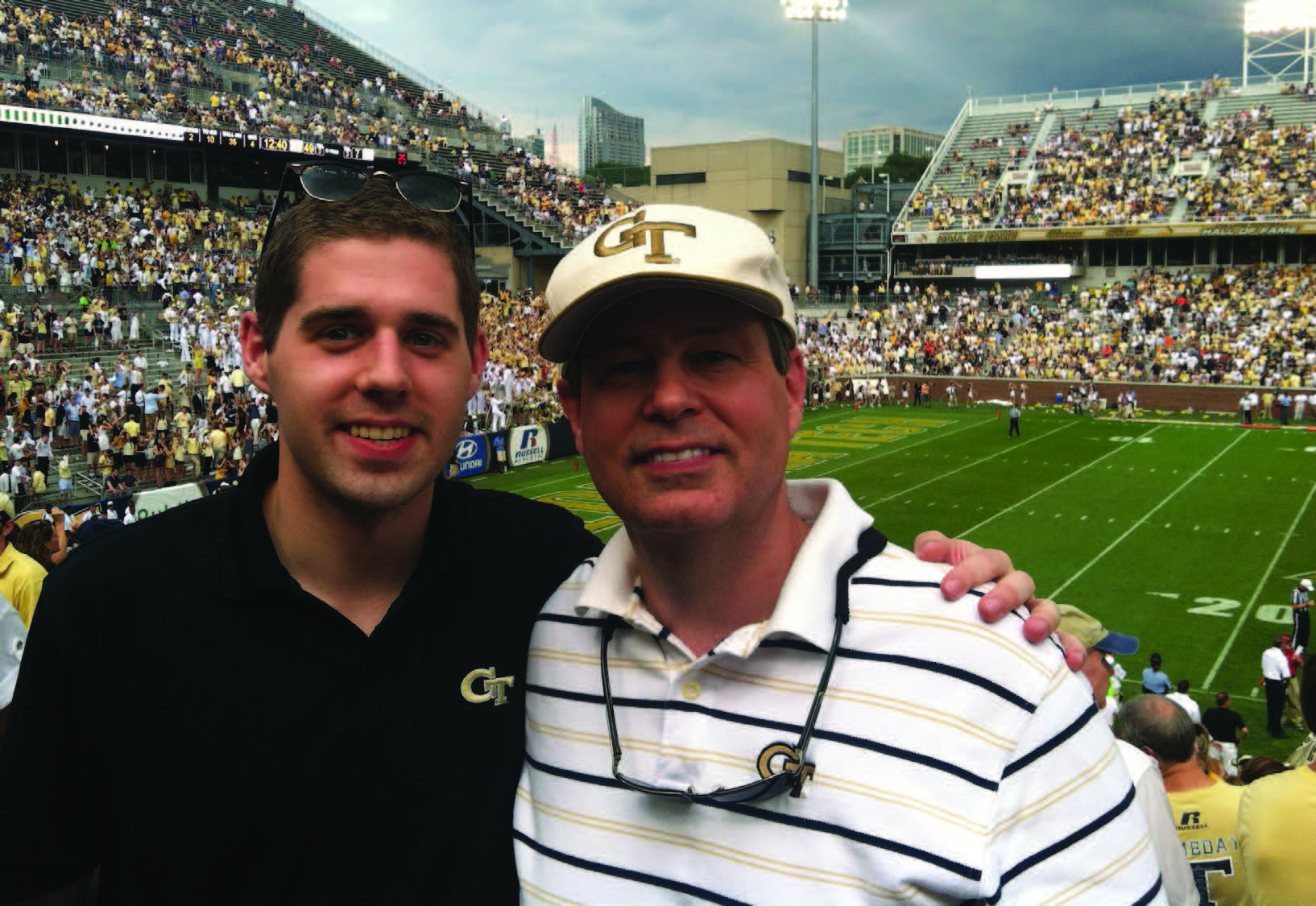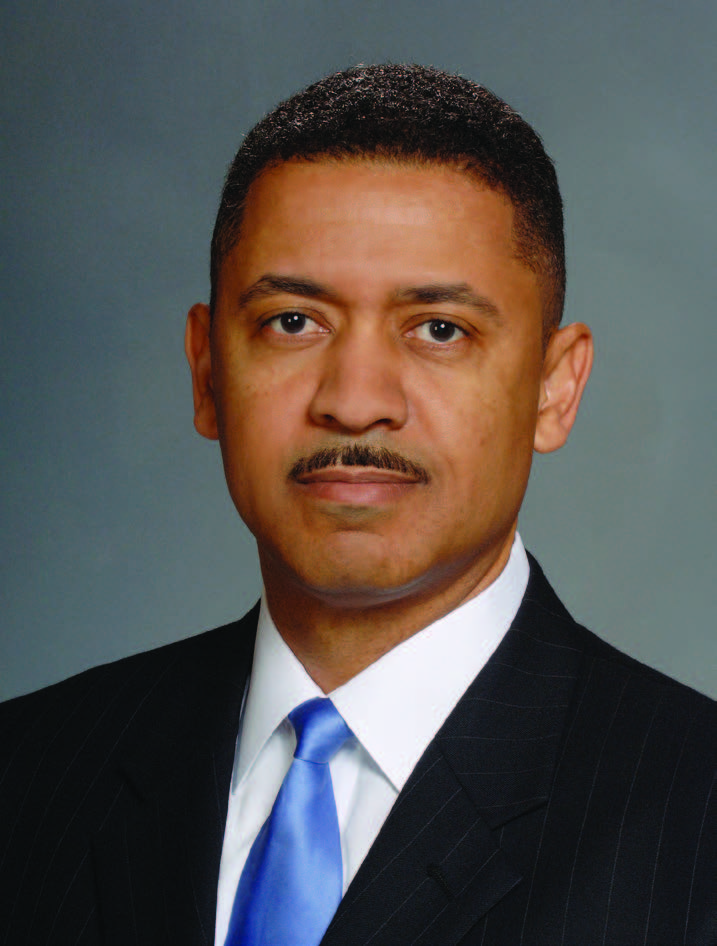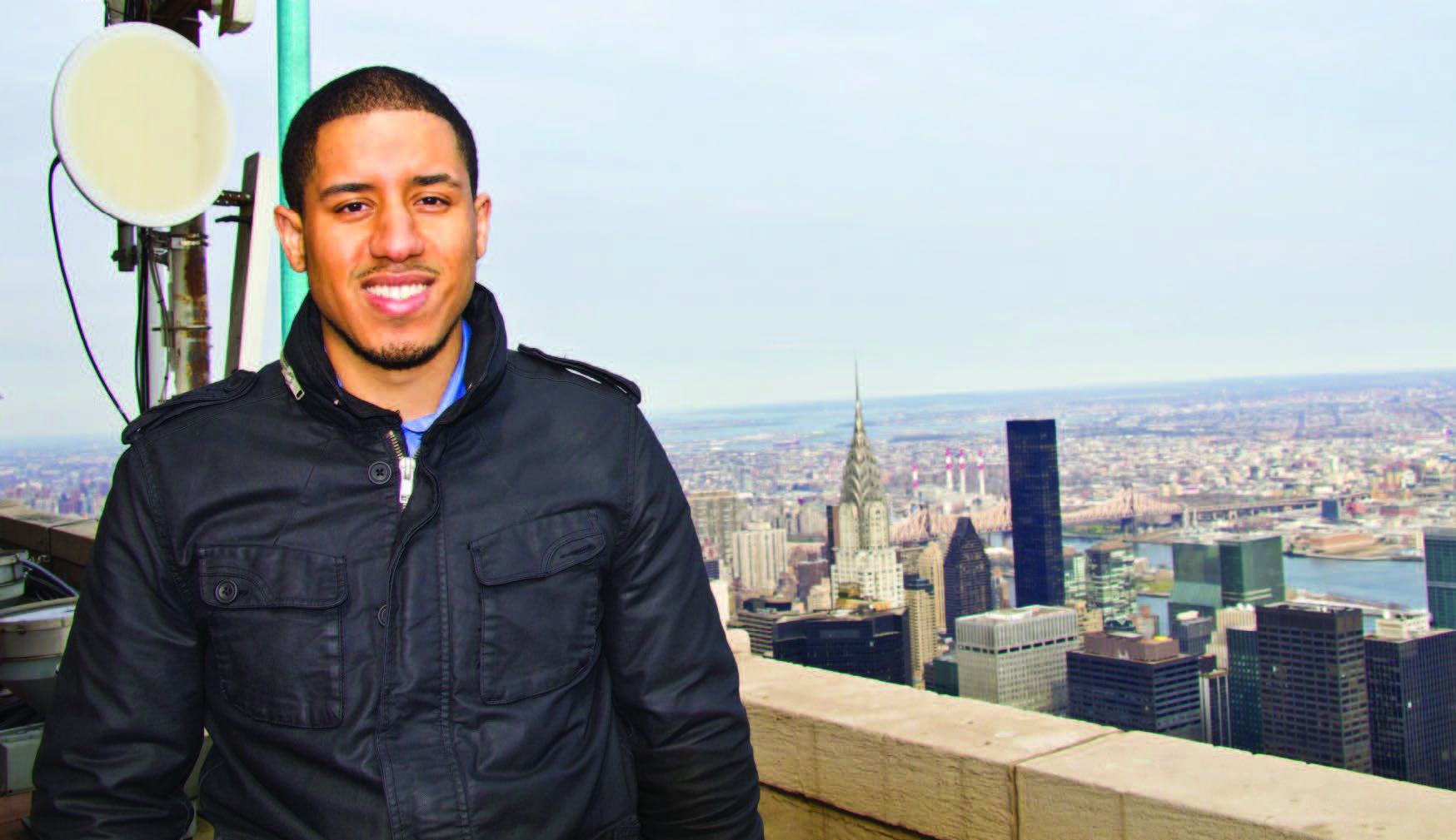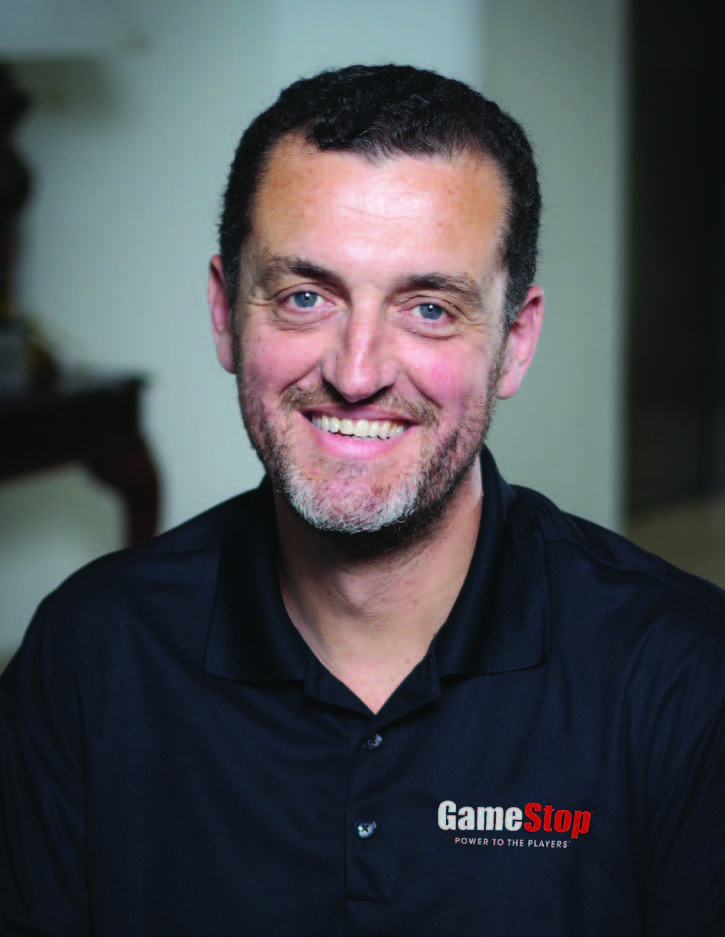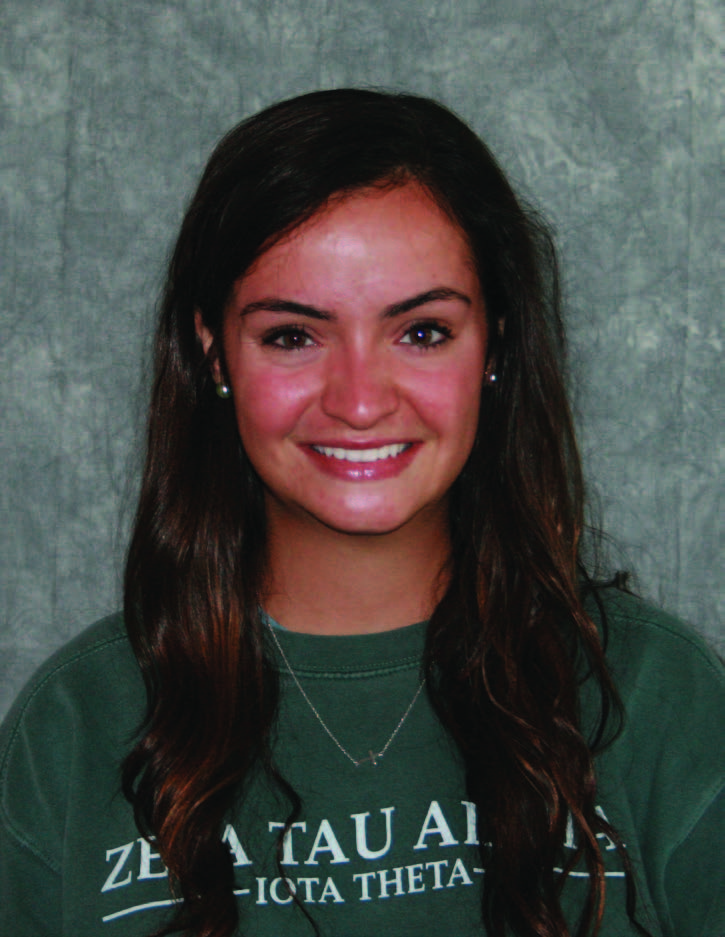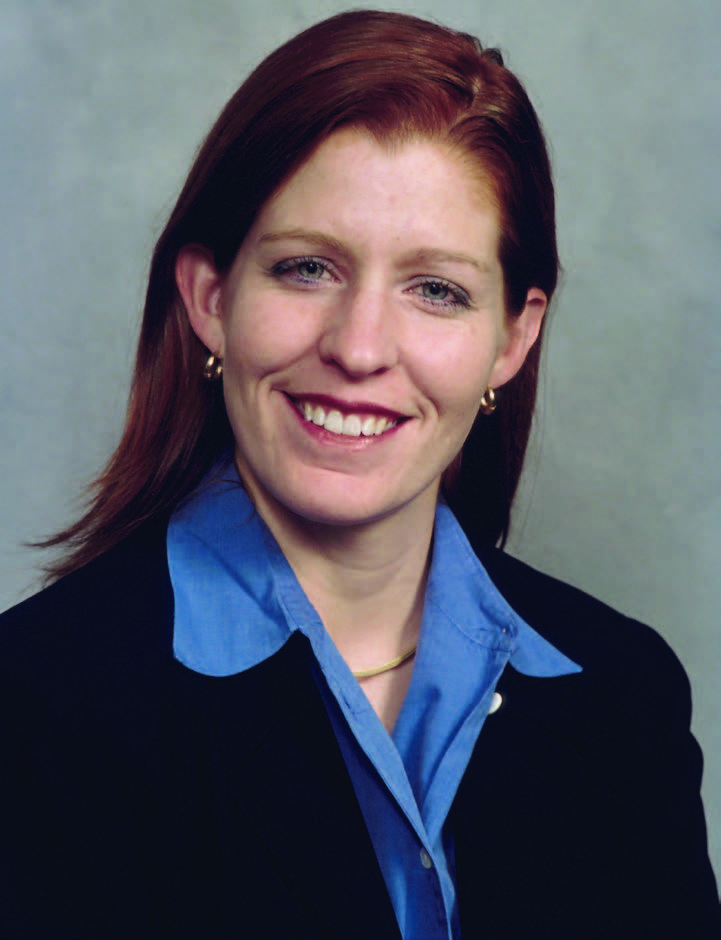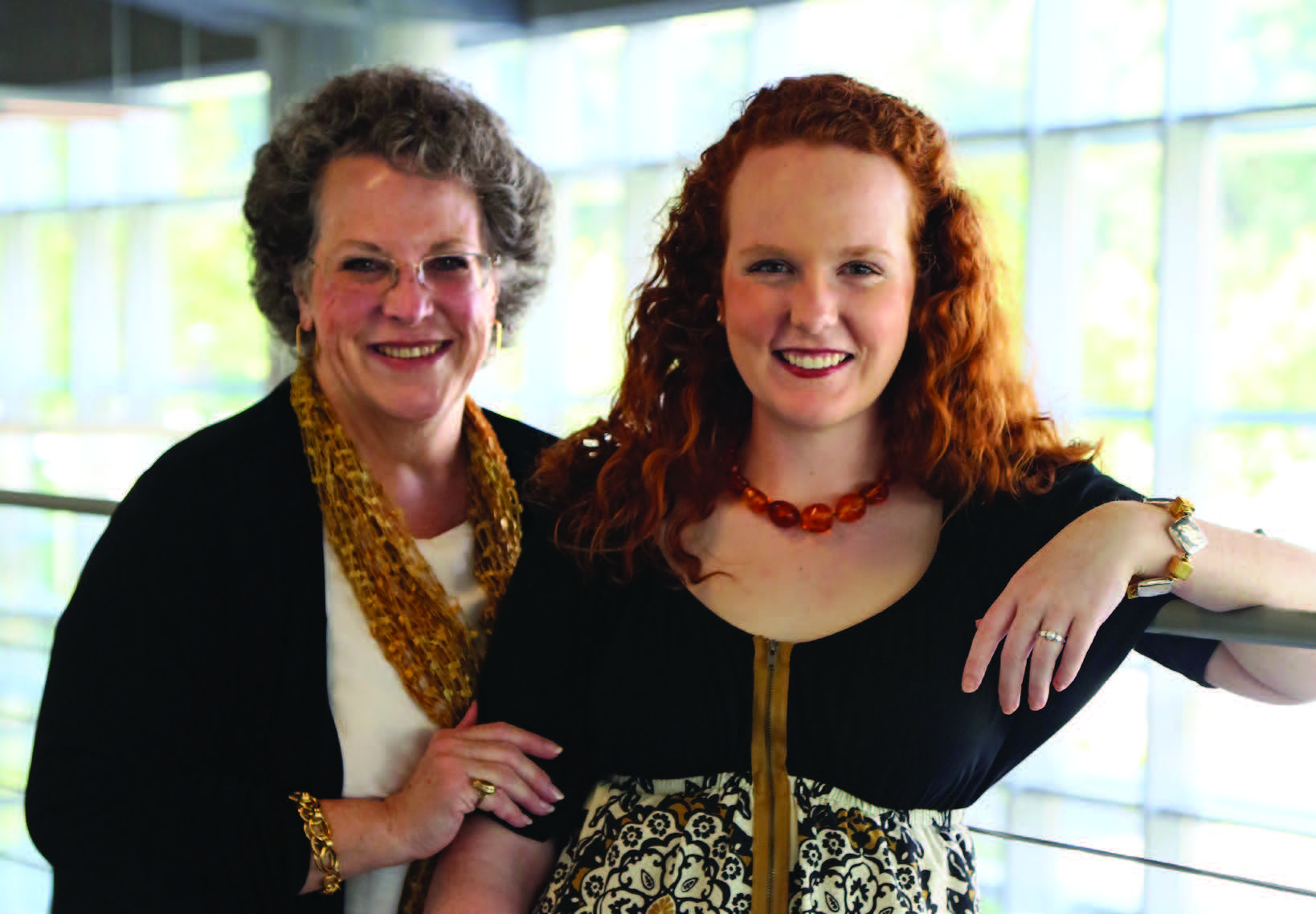Over the past few decades, the H. Milton Stewart School of Industrial & Systems Engineering has seen sweeping changes.
It got a name, for one thing. (Thanks again to H. Milton Stewart Jr., a 1961 alumnus.) Its students and faculty embraced the promises of technology, which has become a constant presence in education. And, of course, the Stewart School itself has grown into a global force that serves business and humanitarian needs alike.
But a few things have remained remarkably consistent — and we’re not just talking about high rankings.
One of the defining experiences for industrial and systems engineering (ISyE) alumni of all backgrounds is still the senior design course. A milestone in the IE curriculum, this class offers both real world project experience and realworld stresses.
“You go through a lot of pain,” said Chris Anderson, B.S. IE 2008. Still, he added, “it teaches you a lot in terms of working and meeting deadlines.” His father, Mike Anderson, graduated from ISyE nearly three decades earlier. But his senior design work still stands out to him too, and he cites it as one of the key courses in his Georgia Tech career.
Memories of that class came up time and time again in interviews with ISyE alumni, students and professors. As the Stewart School continues to grow in size and scope, some changes are inevitable, and its stakeholders are optimistic about the future. But they also know that some things remain steadfast. The core principles that defined ISyE decades ago are still very much alive today.
To explore the ties between the ISyEof yesteryear and the one of today, we spoke to some of its alumni, students and professors — many with ISyE family connections.
EXPERIENCING ISyE
Like countless students before and after him, Ed Rogers grew up loving Georgia Tech. His father,
ISyE alumnus and professor emeritus Nelson Rogers (recently deceased), had been taking him to Yellow Jacket football games since he was a boy. Once he was a Tech student, he decided to study industrial engineering partly as a function of his personality, which is driven to create order out of chaos.
“Frankly, I’d always preferred to be in situations that are run efficiently,” he said. “That’s just the way I’m wired.”
Rogers, now a director of global strategy at UPS, received his bachelor’s degree in industrial engineering in 1982. (Twenty years later, he was among the graduates of Tech’s very first Executive Master’s in International Logistics program.)
He shares his alma mater with his son, Matlock, and he knows their experiences in ISyE share some common themes.
“Georgia Tech undergraduate engineering is by nature rigorous and demanding,” he said. “It always has
been and it always will be; my son Matlock tells me it’s certainly still the case.” Matlock Rogers, who got his bachelor’s from ISyE in 2011, said he’s grateful for the rigor.
Although he stresses that “the coursework was challenging,” he appreciates the depth at which he was expected to understand material. Early in his college career, his classes focused mostly on theory, but as he advanced in the curriculum, Rogers found himself applying his theoretical knowledge to complex, real-world situations.
ISyE professor Julie Swann (who earned her own industrial engineering B.S. from Tech in 1996) enjoys teaching the undergraduate senior design course for that very reason.
“What I like is that students join together to work on projects, and it’s real-world experience,” she said.
Matlock Rogers, meanwhile, now works for Anheuser-Busch as a project manager. His years as an ISyE student, he said, “gave me the right tools and the right exposure to industry.”
FROM CLASSROOMS TO THE WORKPLACE
As chief executive officer of GameStop, Paul Raines leads a busy life. But something he likes to make time for outside the workplace is Georgia Tech, and specifically the ISyE program.
A 1985 ISyE graduate himself, Raines sometimes meets with high school students to discuss the benefits of a Tech education, and he explains the advantages of studying industrial engineering.
So far, he’s had a lot of success with his strategies. Four kids who spoke with him went on to attend Tech. (His daughter, Victoria, is a current ISyE student, and she reports her dad “was ecstatic” about her decision to attend his alma mater.)
Raines laughs when he calls himself a Georgia Tech “closer,” but he’s serious about the value of industrial engineering.
“ISyE is fantastic, because it is a very broad background,” he said. “It’s certainly technical, but there is an element of systems thinking and integration that is forced on you.”
ISyE’s programs emphasize intellectual rigor, but they’re also known for grounding students in real-life problems to ready them for the workplace. That initiation can start right at the beginning of students’ academic careers.
Last year, Victoria Raines enrolled in an industrial engineering-based section of GT 1000, the Institute’s freshman seminar. The class taught her more about what kinds of companies hire ISyE graduates, and several program alumni spoke about their experiences.
Paul Raines, meanwhile, still vividly remembers the challenges of a course from later in his Tech career: senior design. Back then, Georgia Tech ran on a quarter system, which meant his class was split into two parts. After spring break, Raines said, he returned to school to find the company he was working for had restructured.
“It was pretty scary, when you’re about to graduate, to have that happen,” he said. But it was also a key learning experience, giving him and his classmates a taste of the last-minute crises that can impact projects in the workplace.
Though his daughter is still in the early phase of her ISyE career, she said she already knows the program will prove “challenging but rewarding.” She’s eyeing jobs that combine engineering and business – much like her dad.
Some of ISyE’s newer offerings are specifically tailored to reflect the modern working world. For example, the Executive Master’s in International Logistics & Supply Chain Strategy Program, which leads to an MS in International Logistics, is designed for leaders in an increasingly globalized workplace.
Participants spend time on four continents over the course of 18 months, meeting for classes in each location about regional influences on logistics.
Ed Rogers, who earned that master’s degree in 2002, said it “was the perfect program in order to get a global, more strategic understanding in challenges and opportunities in logistics.”
The ISyE school at large is committed not only to logistics in the corporate world, but in humanitarian work as well. In her research, Julie Swann focuses on humanitarian supply chains and health issues in Georgia and across the world.
“Our current graduates need to be globally savvy,” she said, “because even if they take a job in Georgia, their companies may have interactions with suppliers all over the world.”
LOOKING TO TOMORROW
n a field that’s constantly evolving, the future can be tough to predict. But ISyE alumni and current students alike all pointed to similar ideas in their visions for the program’s future.
They said that international experience, which wasn’t heavily emphasized at Tech during the college careers of some older alumni, is now very important – and it’s only becoming more so.
Chris Anderson noted that in a world dependent on global logistics, ISyE leaders are smart to encourage study- and work-abroad experiences. And, when students get those experiences early, they gain an advantage for the working world.
“We can work anywhere we want based on our skill set,” he said.
Julie Swann also sees a more international bent in the student body itself. Since her days as a student, she said, Tech has become more diverse in languages spoken and nationalities represented.
Another change highlighted by alumni was the very type of humanitarian work Swann is involved in. Mike Anderson, for example, envisions future graduates becoming more involved with nonprofits, and he’s looking forward to seeing the impacts today’s ISyE students will make in that realm.
“I see IE doing that on a state, region, national and worldwide level — and being able to provide some solutions,” he said.
Then, of course, there’s the wildcard: technology. Chris Anderson pointed out that technology has shifted in innumerable ways since his own father was in school, and that more changes will bring more opportunities to ISyE students.
Back when Paul Raines was in school, there was a brand-new program at ISyE: PC rental. Students could sign up to rent one themselves, which Raines found amazing.
“I thought, ‘Man, this is the future!’” he said.
Times have changed, but Raines is pleased to see ISyE keeping up with technology and growing to meet the modern world’s demands.
“It’s just such a comprehensive program,” he said.
THE ZALESKYS
Charlene and Zola Zalesky are your typical Yellow Jackets, but they’re also a million miles from average.
In their family of four, everyone is a Georgia Tech graduate or a current student. But Charlene and Zola also share an ISyE connection: Charlene earned a bachelor’s in health systems in 1977, and Zola, her daughter, is now an ISyE student herself.
“Recognizing my mom’s career success across four different industries is what initially sparked my interest in industrial engineering. I saw how the IE degree led to a wide variety of career opportunities,” Zola said.
Although they share many of the same ideas about and passions for ISyE, the generational divide between them underlines the changes the school is making to face its future.
When Charlene was a student, computations were done on slide rules, and computers took up whole buildings. These days, personal laptops rule the classroom.
And, when she began at Georgia Tech in 1973, there was just one female student for every 20 male students. By the time she graduated, the ratio was 1:12, and now that Zola is a student, it’s 1:3.
These days, there are new chances for students to learn outside the classroom too.
“We didn’t have the internship or international opportunities they have today,” Charlene said, noting that these opportunities help students “recognize what they don’t want to spend a career doing as much as what they do want to do.”
Zola, for example, has already studied abroad in Germany. Fluent in German, she hopes to return to the country for an internship.
As the fourth member of her family to attend Georgia Tech, Zola is proud to be part of the ISyE program. But she’s also excited to carve her own path at Georgia Tech — and beyond.
“Industrial engineering, more than some of the others I’ve noticed, is more influenced by women,” she said.
As Zola grew up, Charlene said, she made it a priority to show her “the role of women” in the field. Her daughter was inspired and encouraged by meeting female engineers. Teachers often discouraged her from pursuing a career in math or hard science because she excelled in social sciences, but Charlene introduced her to professionals in various fields and made sure Zola knew that engineering was an option for her too.
Now she’s at Tech all on her own, Zola is eager to make ISyE her own.
“This is my IE degree,” she said, “my Georgia Tech experience and my path to an exciting career in medicine or logistics or finance or what dream I decide to pursue.”
Written by: Lyndsey Lewis
This article first appeared in the ISyE Alumni Magazine
For More Information Contact
Barbara ChristopherIndustrial and Systems Engineering404.385.3102
